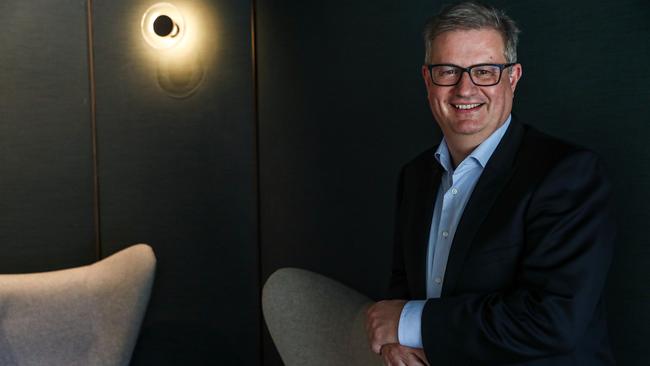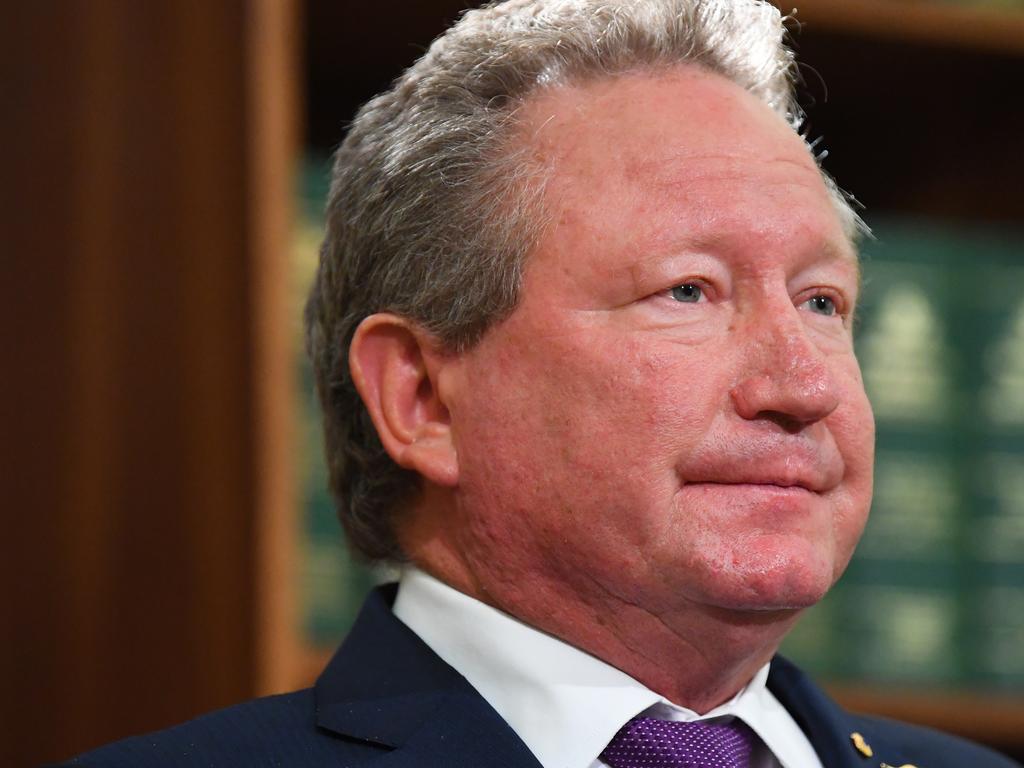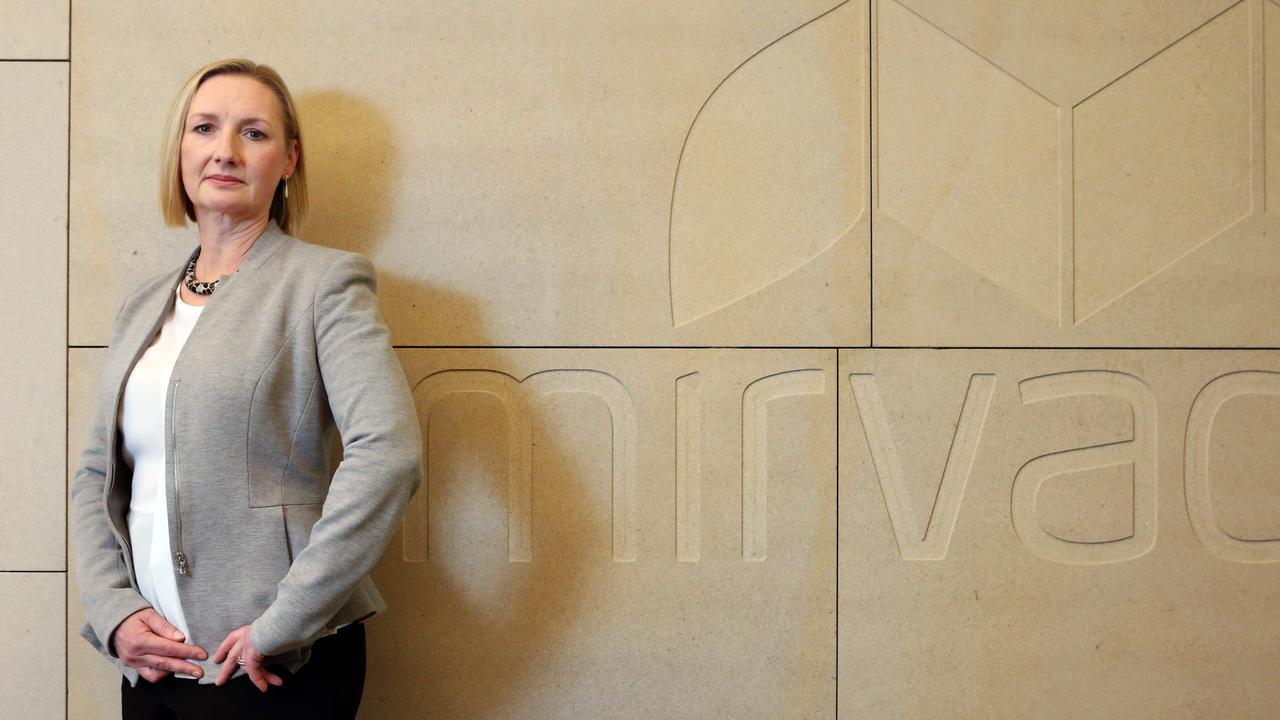
The former NAB executive made the move from Melbourne to Perth two years ago, in the wake of the gruelling Hayne royal commission, to run the private business and philanthropic interests of Fortescue chair Andrew Forrest and his wife Nicola.
With the ability to make major investments at a moment’s notice while also overseeing some $2bn in Forrest family philanthropic interests, the quietly spoken piano player is now arguably in a much more powerful position personally than he might have been had he stayed at or even run NAB.
The company known as Tattarang and associates have a 36 per cent take in Andrew Forrest’s Fortescue Metals Group, whose fortunes are largely focused on selling iron ore to China.
The latest billion dollar dividend from FMG is swept into Tattarang’s coffers ready for Hagger to spend on the six sectors which Forrest is backing — including renewable energy, commodities such as nickel, property, beef and agribusiness, and a range of businesses including the iconic clothing maker R.M. Williams.
With a staff of some 1500 (which has almost doubled under Hagger’s tenure) recent deals have included the $190m purchase of R.M. Williams, investments in property in Perth, a planned eco resort at Exmouth, and investments in start ups including digital payments company Azupay, commodity trading software company GLX Digital and biotech Invex Therapeutics and two nickel projects in Canada.
Tattarang, in turn, passes funding to Minderoo, the Forrest family philanthropic arm — the second largest in Australia — at the discretion of Andrew and Nicola Forrest as and when needed.
With a staff of more than 100 over 10 locations, Minderoo funds initiatives including fire and flood resilience, antislavery, cancer treatments, work against plastic waste in the oceans, the arts and indigenous welfare.
It’s an unusual role which would not suit many people in business but one which Hagger, who has long had an interest in philanthropy, along with stints at accounting firm PwC and then NAB, seems to be enjoying, now living within walking distance of his riverside workplace in Perth’s Old Swan Brewery.
Tattarang’s name first came into prominence last year with rumours that Forrest was looking at investing in airline Virgin (it didn’t go as far as making the shortlist) and can expect to become a player against private equity in other investments in Australia in future.
Fortescue’s continued success, despite the global pandemic, is due to the strength of the Chinese economy, now the fastest growing in the world.
Australian exports to China have continued strongly over the past year despite political tensions due to the continued strength of iron ore prices and the problems of rival iron ore supplier Brazil.
“The fact that the total value of goods exports to China hit a record high during January-February speaks to China’s ongoing voracious appetite for Australian iron ore, and its inability to get iron ore from anywhere else,” said James Laurenceson, an economist and director of the Australia-China Relations Institute at UTS, speaking to The Australian’s China correspondent Will Glasgow this week.
“Beijing isn’t willing to shoot its own steelmakers in the foot, or set aside its infrastructure-heavy stimulus support for the Chinese economy, in order to make a political point to Australia,” he said.
The rise of Tattarang as a private investor in need of a much larger corporate organisational structure is a sign of the times, with an increasing number of successful entrepreneurs such as Atlassian’s 41-year-old founders Michael Cannon-Brookes and Scott Farquhar, and the Pratt family, investing in a range of private investments and philanthropic ventures.
But Forrest is not putting all his eggs in the China basket.
In his Boyer lectures for the ABC this year he announced a major expansion of Fortescue’s operations into the renewable energy sector.
Forrest, who may be the first Boyer lecturer who had to file his speech with the stock exchange ahead of its delivery, has done very well out of the rise of China.
But his announcement signalled a major shift in strategy for FMG with the formation of Forrest Future Industries, focusing on clean energy investments, which will pull in no less than former PM and renewable energy supporter Malcolm Turnbull as chairman.
Forrest’s new passion is renewable energy including an ambitious desire outlined in the Boyer lectures to make hydrogen energy work.
As Forrest explains, the decline of industries which have been key to Australia’s economy in the past such as coal is inevitable, so why shouldn’t the country get on the front foot with an aggressive push into renewable energy making a series of bets on the future to see which can pay off?
Forrest is like many other private sector players and company leaders who are making their own decisions to invest in renewable energy and not wait for leadership from governments.
Hagger says that FMG and Tattarang are not going to compete with each other but they may be able to work together in some areas, particularly renewables
Tattarang has a growing expertise in solar and wind through its subsidiary Squadron Energy. Squadron is working with Grok Ventures, the private investment company of Michael and Annie Cannon-Brookes, on the construction of Sun Cable which will see the world’s largest solar energy farm and a battery storage facility in Tennant Creek in the Northern Territory delivering energy to Darwin and then on to Singapore.
None of the renewables projects have the same potential to generate the billions of dollars as selling iron ore to China but they are investments in future energy sectors.
In effect, through both FMG and Tattarang, Forrest is recycling his share of Australia’s iron ore dollars into renewable energy and other local ventures including start ups and agribusiness.
While other players including former NAB chief executive Andrew Thorburn and senior executives from companies such as AMP have left financial services for a quieter life post the royal commission, Hagger is an exceptional to the rule, who can quietly thank commissioner Ken Hayne for his part in his career trajectory which will see him becoming a key player in more deals in sectors of the future.
Billionaires can take the kind of big bets which bankers can’t.








Andrew Hagger’s $1.5bn chequebook infusion this month is a both a reminder of the importance of the iron ore industry to the economy and a signal to the future of industry sectors.